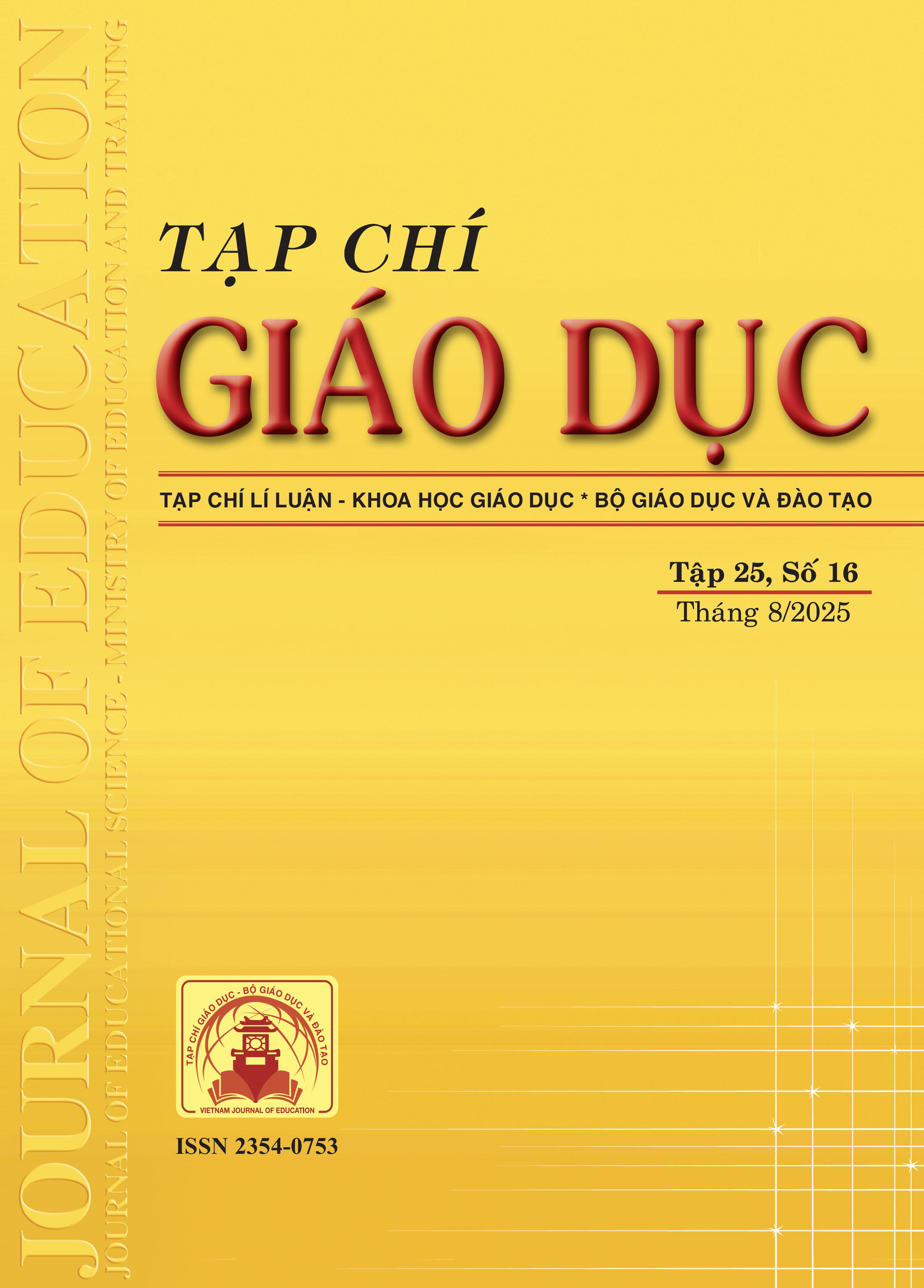Đề xuất mô hình đồng sáng tạo cùng AI và vận dụng trong thiết kế hoạt động dạy học: Nghiên cứu trường hợp dạy học lập trình với sự hỗ trợ của Chatbot AI cho sinh viên đại học
Tóm tắt
In the context of artificial intelligence (AI) being increasingly widely applied in education, this study focuses on proposing and testing a teaching model of programming integrated with AI Chatbot in the direction of co-creation to promote students' initiative, critical thinking and creativity. The article uses a case study method combined with a student survey according to the TAM model (Davis, 1989) and SRL (Zimmerman, 2000), and open interviews to assess the effectiveness, initiative and satisfaction of students in the learning process with AI Chatbot. The results show that the co-creation model with artificial intelligence has a positive impact on improving students' programming ability, critical thinking and interest in learning. This study is considered a useful document in designing teaching activities integrating artificial intelligence in the direction of co-creation, developing digital capacity and creative thinking for students in higher education.
Tài liệu tham khảo
Amabile, T. M., Conti, R., Coon, H., Lazenby, J., & Herron, M. (1996). Assessing the work environment for creativity. Academy of Management Journal, 39(5), 1154-1184.
Bộ GD-ĐT (2025). Thông tư số 02/2025/TT-BGDĐT ngày 24/01/2025 quy định Khung năng lực số cho người học.
Brown, T. B., Mann, B., Ryder, N., Subbiah, M., Kaplan, J. D., Dhariwal, P., ... & Amodei, D. (2020). Language models are few-shot learners. Advances in Neural Information Processing Systems, 33, 1877-1901. https://doi.org/10.48550/arXiv.2005.14165
Daugherty, P. R., & Wilson, H. J. (2018). Human + Machine: Reimagining work in the age of AI. Harvard Business Review Press.
Davis, F. D. (1989). Perceived usefulness, perceived ease of use, and user acceptance of information technology. MIS Quarterly, 13(3), 319-340. https://doi.org/10.2307/249008
Eco, U. (1992). Die Grenzen der Interpretation. BoD-Books on Demand.
Gunning, D., Stefik, M., Choi, J., Miller, T., Stumpf, S., & Yang, G. Z. (2019). XAI-Explainable artificial intelligence. Science Robotics, 4(37), eaay7120. https://doi.org/10.1126/scirobotics.aay7120
Holmes, W., Bialik, M., & Fadel, C. (2019). Artificial intelligence in education: Promises and implications for teaching and learning. Center for Curriculum Redesign.
Kasneci, E., Sessler, K., Küchemann, S., Bannert, M., Dementieva, D., Fischer, F., ... & Kasneci, G. (2023). ChatGPT for good? On opportunities and challenges of large language models for education. Learning and Individual Differences, 103, 102274. https://doi.org/10.1016/j.lindif.2023.102274
Lubart, T., & Thornhill-Miller, B. (2019). Creativity and artificial intelligence: A conceptual and critical review. Frontiers in Psychology, 10, 768. https://doi.org/10.3389/fpsyg.2019.00768
Luckin, R., Cukurova, M., Kent, C., & Du Boulay, B. (2022). Empowering educators to be AI-ready. Computers and Education: Artificial Intelligence, 3, 100076. https://doi.org/10.1016/j.caeai.2022.100076
Luckin, R., Holmes, W., Griffiths, M., & Forcier, L. B. (2016). Intelligence unleashed: An argument for AI in education. Pearson Education.
OpenAI (2023). GPT-4 technical report. https://doi.org/10.48550/arXiv.2303.08774
Pleschová, G., & Hýblová, A. (2024). Artificial intelligence and creativity: Anthropological, sociological and pedagogical reflections. Geopolitical, Social Security and Freedom Journal, 7(1), 22-35.
Rudolph, J., Tan, S., & Tan, S. (2023). War of the chatbots: Bard, Bing Chat, ChatGPT, Ernie and beyond. The new AI gold rush and its impact on higher education. Journal of Applied Learning and Teaching, 6(1), 364-389.
UNESCO (2024). AI competency framework for students. UNESCO Publishing. https://doi.org/10.54675/JKJB9835
VanLehn, K. (2011). The relative effectiveness of human tutoring, intelligent tutoring systems, and other tutoring systems. Educational Psychologist, 46(4), 197-221.
Zawacki-Richter, O., Marín, V. I., Bond, M., & Gouverneur, F. (2019). Systematic review of research on artificial intelligence applications in higher education-where are the educators?. International Journal of Educational Technology in Higher Education, 16(1), 1-27. https://doi.org/10.1186/s41239-019-0171-0
Zimmerman, B. J. (2000). Attaining self-regulation: A social cognitive perspective. In M. Boekaerts, P. R. Pintrich, & M. Zeidner (Eds.), Handbook of self-regulation: Theory, research, and applications (pp. 13-39). Academic Press. https://doi.org/10.1016/B978-012109890-2/50031-7
Tải xuống
Đã Xuất bản
Cách trích dẫn
Số
Chuyên mục
Giấy phép

Tác phẩm này được cấp phép theo Ghi nhận tác giả của Creative Commons Giấy phép quốc tế 4.0 .












